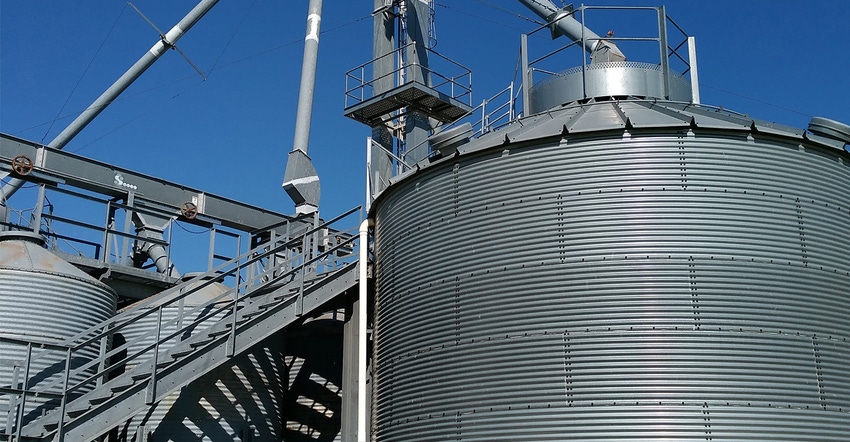February 27, 2020

Each year farmers are exposed to the life-threatening hazards associated with entering grain bins to remove rotting or clumped grain. In just a few seconds, an adult can sink waist-deep in the quicksand-like suction of flowing grain, rendering the person unable to free themselves without help.
To raise awareness of the dangers and prevent such all too common accidents, Nationwide Insurance Co. will host its seventh annual Nominate Your Fire Department Contest in recognition of Grain Bin Safety Week. The event’s goal is to help prevent injuries and fatalities by promoting safe bin procedures when entry is absolutely necessary to maintain quality grain or to test the bin atmosphere for toxic gases. Wear proper safety equipment and always use a spotter who can help if needed.
Since 2014, Nationwide has awarded grain rescue tubes and training to 111 fire departments in 26 states. To nominate your fire department to win a grain bin rescue tube, visit Nationwide to fill out the form. Nominations are open until April 30.
Grain rescue demonstration
To demonstrate the tools and training that communities need to save lives when accidents occur, Nationwide, Corteva Agriscience and the National Education Center for Ag Safety (NECAS) hosted a live grain engulfment simulation and rescue demonstration during Grain Bin Safety Week on Feb. 21 in Peosta, Iowa.
Members of the media attended to help spread the word of caution about working with grain bins. At least 19 deaths from grain engulfment have occurred in the U.S. since August.
Following last fall’s late, wet harvest, farmers are on the edge of a dangerous cliff when it comes to emptying their grain bins, warns Dan Neenan, NECAS director. Conditions are aligning to create the potential for tragic accidents and grain suffocation deaths to occur when grain bins start to be emptied.
It is common knowledge that quality harvested grain placed in storage, coupled with best management practices of caring for grain, results in quality grain leaving storage for market. Inversely, either poor quality grain being placed in storage or poor management practices for caring for grain leads to spoiled grain leaving storage.
Beware of increased safety risk
Getting spoiled grain out of storage always poses an increased risk for entrapment and suffocation to a farmer and worker. Incidents over the years illustrate the direct connection of spoiled grain leaving storage to a tragic grain entrapment and the resulting fatality.
“Grain’s tremendous force that holds victims in grain and the speed that entrapment occurs are often misunderstood,” says Charles Schwab, ISU Extension farm safety specialist. He says it’s important to shift attention once the operator determines that unloading the grain is becoming difficult. The priority of “getting the grain out” should switch to “keeping everyone involved safe.”
There is still time and a strong likelihood of acceptable weather for farmers to use proper aeration and management to alter the grain storage conditions, before leading to more problematic conditions that put people at risk of entrapment and loss of life, he says.
Watch carbon dioxide levels
Dirk Maier, Iowa State University ag engineering professor and grain management specialist, says evaluating carbon dioxide concentrations can be effective in monitoring stored grain quality and early detection of grain spoilage.
A hand-held CO2 sensor, available from several retailers, can be used at exhaust vents from a bin or at access ports for measuring concentrations.
“CO2 concentrations of 450 to 600 parts per million are a safe range to continue storage; 600 to 1,500 ppm indicates onset of mold or moisture infiltration; and 1,500 to 4,000 ppm is a severe condition,” Maier says.
These measurements can assist farmers in identifying grain bins that need immediate attention.
Maier offers this management tip: When you locate a grain bin with a carbon dioxide concentration above 600 ppm and it’s increasing from week to week, use proper weather conditions and aeration fans to bring the grain condition back into acceptable range.
For more information, check out Aeration Module and Iowa Grain Quality Initiative.
About the Author(s)
You May Also Like






